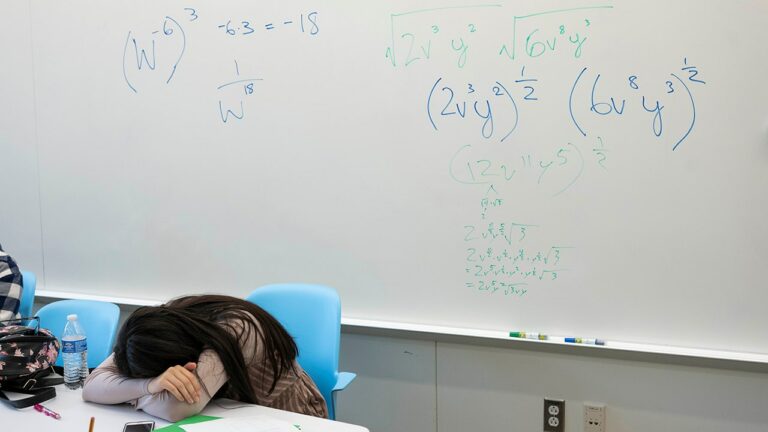College Students Struggle with Math After Pandemic Disruptions
“Years of academy training wasted,” Buzz Lightyear once famously said, but that fictitious line is now the reality for students at various colleges across the country. The coronavirus pandemic and subsequent lockdowns disrupted hands-on, in-person teachings, leaving many students grappling with basic math at the college level, according to professors.
At schools like George Mason University and Temple University, students who once excelled at math are now having to relearn the basics due to pandemic schooling failing to reinforce their learning. This setback is not unique, as many universities are experiencing academic challenges caused by the pandemic’s impact on learning.
Engineering and biology majors, for instance, are struggling with fundamental concepts like fractions and exponents. Some students are even starting their college math journey behind their program’s requirements, while others are taking proactive steps to avoid potential setbacks.
A Challenge in College Math
The issue of math learning disruption is significant. George Mason University reports a rising number of students arriving with gaps in their math skills. Fewer students are succeeding in calculus courses, and more are failing. This problem is not limited to George Mason; it has become a widespread issue affecting multiple universities.
Maria Emelianenko, chair of George Mason’s math department, emphasized the gravity of the situation, stating, “We’re talking about college-level pre-calculus and calculus classes, and students cannot even add one-half and one-third.” This issue prompted the university to host a Math Boot Camp to help students catch up on missed math lessons.
The Pandemic’s Impact on Math Education
The pandemic’s disruptions have led to a decline in reading and math scores on national tests like NAEP. Math scores, in particular, have seen a significant drop, causing concern among educators. The switch to virtual classrooms made it challenging to teach math effectively, and gaps in understanding went unnoticed as students moved on to new topics.
Parents also found it easier to assist with reading than with math during remote learning. As a result, students fell behind in critical math skills.
Efforts to Bridge the Gap
Colleges are striving to address this issue, but there’s no simple solution. Some schools are identifying gaps earlier through placement tests and adopting strategies like summer camps to help students catch up. Corequisite classes are also being offered, allowing students to cover the basics while taking higher-level courses.
At Temple University, math professor Jessica Babcock is redesigning the algebra course to better meet students’ needs. She acknowledges the importance of making students feel involved in their learning. Peer tutoring at Penn State has shown positive results, with participating students scoring 20% higher on exams.
While the challenges persist, colleges and programs are working to understand the long-term effects of pandemic disruptions on students’ education. The full extent of these effects may take years to become clear.

